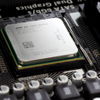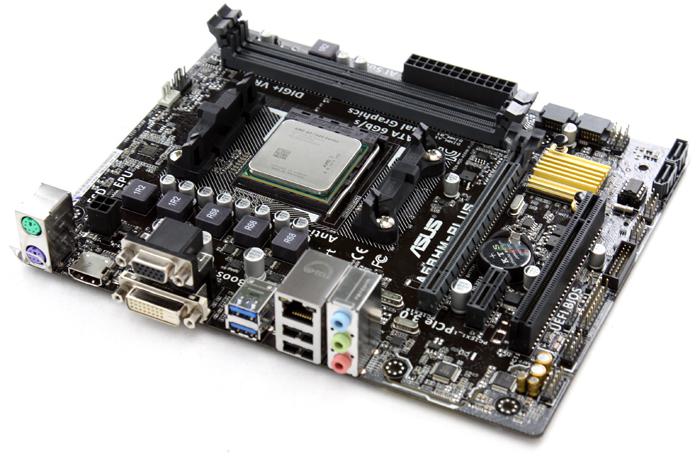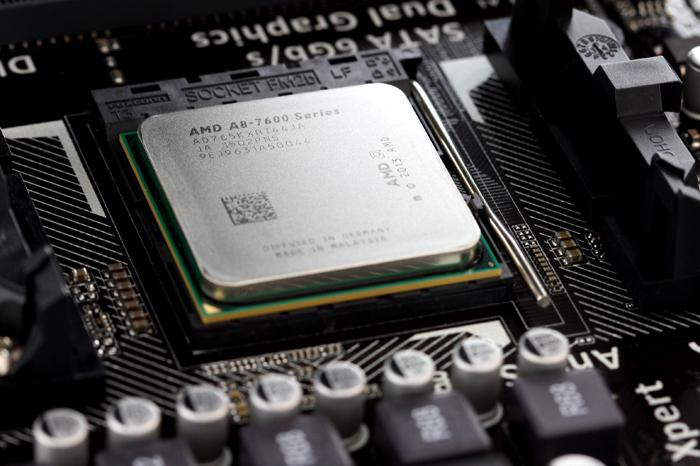Finals Words & Conclusion
Final Words & Conclusion
I've always been fond of AMD's APUs for the sole reason that they offer a nice balance of features and price. You can discuss the CPU power of course as we all know, it takes AMD 4 cores for what Intel can do with two of them. It is a huge stigma that is bothering AMD's business and sales model. They have been jinxed a little due to this as more cores is not the solution to this complex thesis. Fact remains that Kaveri is a good step forward for AMD, as it offers very strong IGP performance alongside OpenCL performance. And once you pop in a decent dedicated graphics card, you can still play your games at Full HD quite well. Kaveri all by itself is a powerful APU, the focus for AMD however has been everything but the processing performance, and that keeps puzzling me. Fact remains that this product is dirt cheap for what you get, the motherboard is 60 EURO, the APU 99 EURO. If you keep it on the IGP, then your idle power consumption sits at only 25 Watts and under stress you max out at roughly 100 Watts. That makes this product very interesting for a simple net PC, HTPC, file-server/NAS and even for a simple gaming rig this setup is sufficient enough.
The A8-7650K APU as tested today is performance wise roughly at similar performance levels as the previous generation A10-6700 and A10 6800K APUs. We feel that the AMD A8-7600 series are products for entry-level towards mainstream PCs, it is an excellent solution for HTPCs really. The focus on the A8 system and the capabilities will be small form factor PCs for casual gaming, media etc and on that front it definitely excels.
Performance
Overall though our conclusion remains fairly close to all other APU reviews we have written in the last year or so, the danger for the success of the APU on the Desktop PC platform remains the lack of raw processor power. But the IGP inside the APU is leading and highly programmable. OpenCL and anything compute related is exactly where this APU shines. Gaming wise a migration of the architecture to GCN is a very clever step as well. With mediocre settings you can actually play games at 1080P, please do pair it with fast DDR3 memory though as the iGPU is very dependant on system memory. So yeah, you can even play game at 720P and some even at 1080P considering you flick down image quality settings, and that's progress alright. Realistically if you build a PC for everyday usage like browsing and perhaps Photoshop a thing or two then it's all good really. The Kaveri APU also excels with its updated video engine and all the multi-monitor output lovin this APU offers.
Power Consumption
TDP wise AMD has given the A8-7650K a configurable TDP option in the BIOS. If you need a little more wattage then in the BIOS you can enable a 65W TDP, if you like a more energy friendly box (say a nice HTPC or NAS/File-server) then you can configure the APU at 45W. Both configurations we feel in this day and age are reasonable for what the product really is and offers.
The Platform Overall
Now in the beginning of this conclusion I wrote an entire chapter about processing performance, but the truth is also (and you do need to realize this) that a Kaveri APU based platform will offer value for money. AMD is intensely strong with the embedded GPU and can spin-off many functions from that GPU. Combined with the series 8 chipset you will gain features like a SATA-600 and USB 3.0 support. Also a very powerful Catalyst based software suite surrounding AMDs APUs definitely brings heaps of advantages to them opposed to the competition. Remember, the A8 7650K APU offers decent CPU performance, excellent multi-media options, the Full HD experience and sure, even gaming albeit a bit low level will work just fine.
Concluding
As so often with AMDs APUs the crowd will look away due to one fact, overall serial processing performance (raw processor performance) is just not enough to make a big enough difference for you guys as you demand something faster. You do need to realize, that this is the only negative thing for Kaveri. On the architecture side of things, Kaveri is looking mighty good. Even the A8 model we just tested managed to impress me and will make for an excellent APU to run your average PC for browsing, photos and multi-media functionality. It'll be great as a NAS or HTPC and other small form factor functionality. Where the A10 has 512 Shader processors, the A8 has 384 Shader processor inside the iGPU, and even then it manages to position itself on top of our IGP rankings. So the move towards the GCN GPU architecture was a great, albeit expensive, one. But utilizing both the CPU and GPU architecture does make Kaveri Excel at tasks that will make use of both, OpenCL keeps coming back into my mind as well as gaming. If you purchase a Kaveri APU with the combination of that Series 68 motherboard, you'll have a processor, graphics subsystem, up-to four SATA-600 ports, USB 3.0, heaps of USB 2.0 ports, Gigabit Ethernet, HD audio and you simply get a very up-to-date PC. So for 99 EUR the A8-7650K can make a lot of sense combined with the 59 EURO motherboard as shown today from ASUS.
The setup in its entirety is a difficult thing to beat in terms of features and generic performance, this is a lovely and affordable APU for a HTPC or a simple Windows 8.1 PC. Gamers with a high-end dedicated graphics cards will however require a little more boom-boom-pow in the raw processor performance. That said we are interested as to how the upcoming DirectX 12 and Windwos 10 are going to help out the gaming experience with AMD APUs. The A8-7650K is nice in price-performance and is a sweet-spot APU combined with the ASUS A68HM-Plus motherboard as tested today, within its range and channel positioning of course.
Handy related downloads:
- Sign up to receive a notice when we publish a new article
- Or go back to Guru3D's front page.




